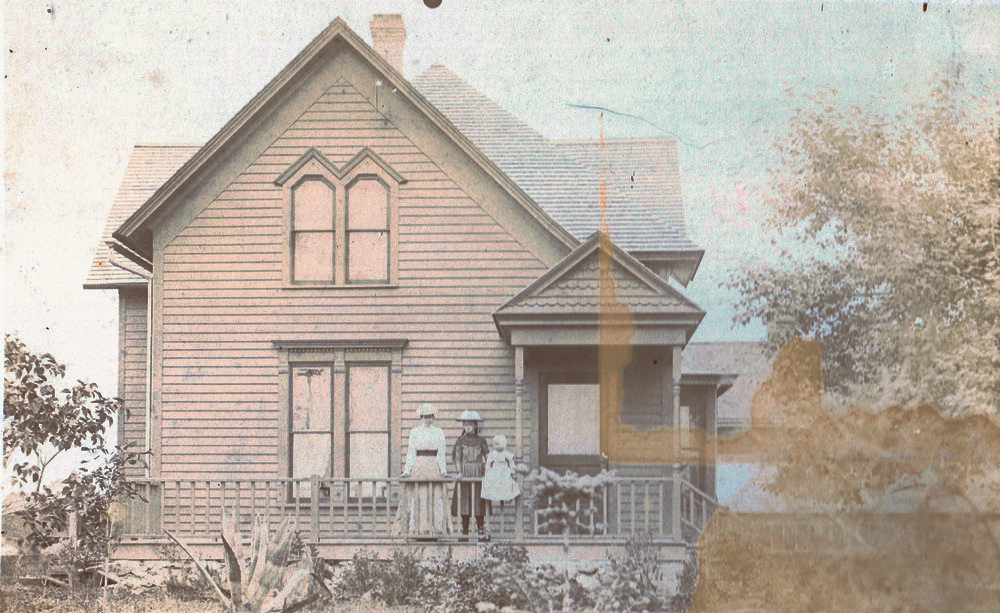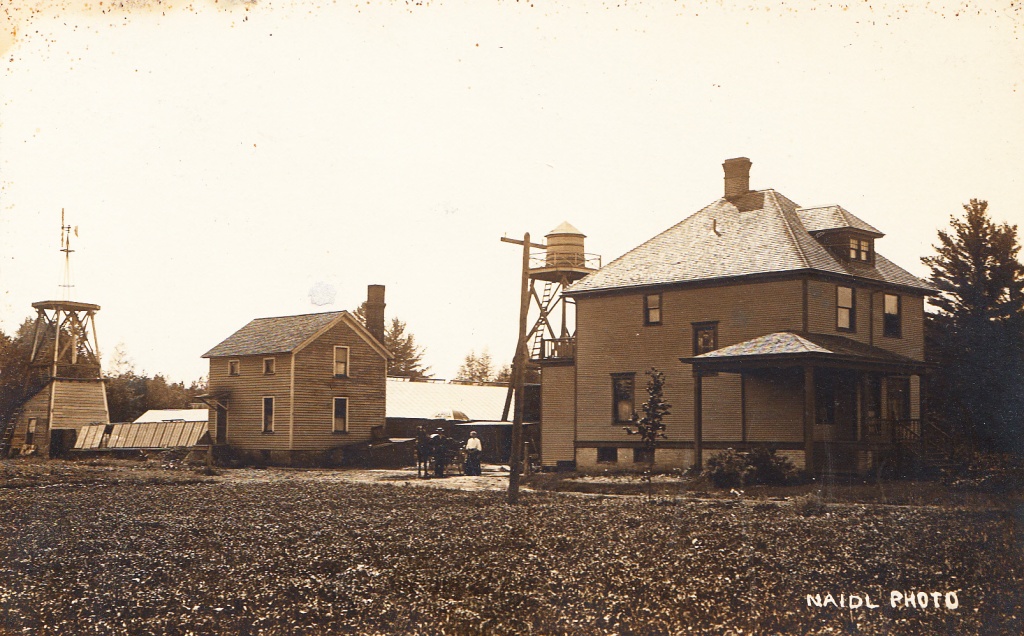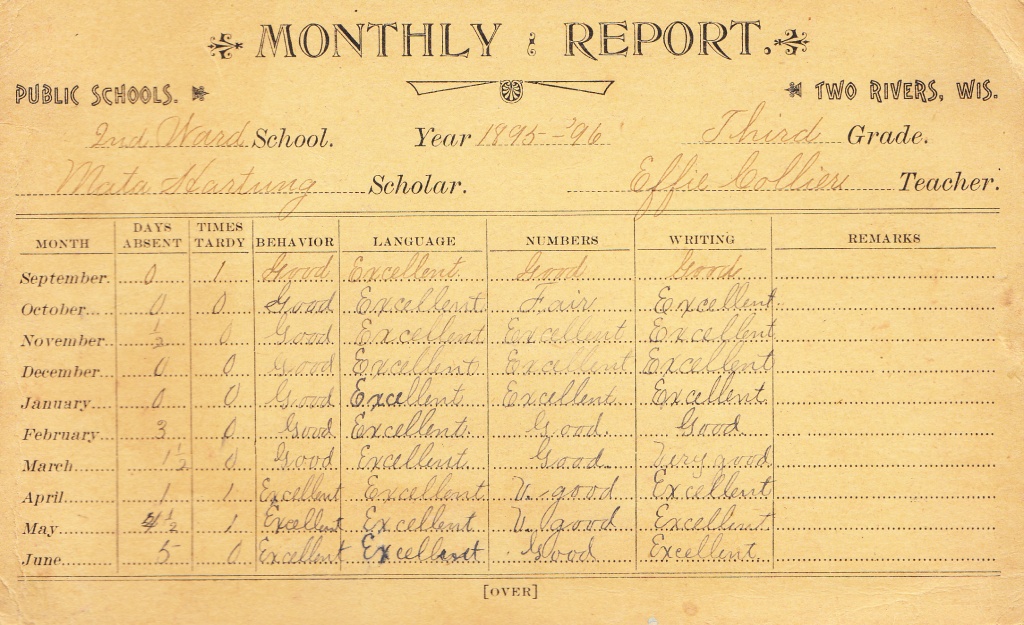I have been fortunate enough to have a lot of photos and documents related to my family’s history. The main person covered by this documentation is my great-grandmother, who had the interesting name of Mata. I’m going to write a series of short posts covering different parts of her life as well as the lives of others in the family, and while there is less about information about Mata’s childhood, I have done my best with what I have, so here it goes.

Mata was born on a cold winter day on January 21, 1888. Her family was fairly prominent in the small town of Two Rivers, Wisconsin, which had a population of around 2,500 at that time. Her father, Louis, had a successful career as a florist, growing the flowers on his farm in greenhouses. German was spoken in the household. While both of her parents were born in and grew up in the US, her grandparents had immigrated from Germany in the mid-1800s. The 40-acre property, which included a big house, greenhouses, a barn, and a park called Floral Park. Mata had two siblings, a brother named Norbert (born 1891) and a sister named Leatha (born 1897), both of whom I’ll write about in separate articles in the future.

Much of the information I have about Mata’s childhood comes from a very short autobiographical essay she wrote towards the end of her life. The information is vague and doesn’t really show her more poetic writing style of her younger days, but here is an excerpt from that essay:
“Each morning the neighbor boy would get our cows and take them with the neighbor’s cows to our pasture. At that time we all drank real milk. As children we had fun. The old hay barn was just perfect. So hide and seek was a favorite game. Then came baseball and the sand box plus dolls. But we had less fun than the neighbor children because there was work to do.”

A school journal from 1899-1900 also survives, containing two short essays written by a pre-teen Mata. The first, titled “Thanksgiving Vacation,” describes an average day of fun children’s activities during Thanksgiving break, 1899. Here it is in full, including mistakes and misspellings:
“On Thanksgiving day, I and my brother went to the woods. While we were on our way I met Ella Wehausen and she said she would go along with me. Elsie Kamm and her brother and Ella’s cousins all went. First we went into Mrs. Schultz’s farm and we found winter greens with berries. While we was were picking winter green a hunter’s dog came out and we were so frightened that we ran away and I fell down. Then we came to where there was some a kind of swamp; and there we found cat tails and we all picked some. Then from there we went to our woods. My brother and Elsie Kamm’s brother went to get some whips and then went home but all the rest of us went into the woods, then we went into our park, here we sat down on the bench. Then we cleaned our clothes for they were all full of some kind of things that stick to us. While we were setting there a few drops of rain fell and we thought we would go home. Thanksgiving forenoon I was chopping a little wood just for fun and Elsi Kamm’s brother too. After a while the Panki boys came, and we said “We will play hiding and seek.”One blinds and counts up to fifty, then the one that hides say ‘Bushel of wheat bushel of rye who isn’t ready holler I,’ and then if know [sic.] one says ‘I’ then the one that blinds hunts us. The boys made bows and arrows and had lots of fun.”

The second short essay from 1900, titled “Our Picnic,” briefly describes a school activity:
“I wasn’t at the school picnic only once and I cannot remember about it but we had a picnic ourselves in our park. We had We went about two o’clock we had our baskets in our wagon. Sometimes we have ice cream and have tables and benches out. There where we put what we bring eat on. We play a great many games. We have a little pond in our park and a bridge over it. Some times we have a large picnic and a great many people of Two Rivers go out there, we give lunch and coffee and ice cream. Sometimes at our picnic we have our pictures taken by Mr. Braun. A dish of ice cream costs 5 cents we have a stove in a shed and where we make our coffee there. In the shed there is a basket board which we push aside and give our ice cream and coffee but most of the people take their lunch along but always by ice cream. We give with the ice cream some of those little white cookies. Then when they are ready to go a bus gets them. They go about four o’clock. After awhile we go to.”
Of course, there was a lot of work to do on the big family farm, but Mata and her siblings also went to school when they were old enough. For Mata, it was a rough start at first. According to her autobiographical essay, an older neighbor boy walked her to the kindergarten schoolhouse and after only five minutes, she ran back outside after the neighbor boy and he walked her back home. But after that rocky start, she recovered and became a good student, as we can see in some of her surviving report cards.

This would all be foreshadowing for Mata’s future job as a teacher, where she ended up going off to small towns far away, but those are stories for different articles.
I enjoyed seeing her report card. Thank you for sharing her essays as well.
LikeLiked by 1 person
I heard about this site from your 1920s YouTube Channel. I thought I would check it out. It’s cool to see your great-grandma was a teacher. I am a teacher too. I did a little digging and found out quite a bit about your family tree. I don’t know if you still have family living there, but I currently live only 2 hours south of there, in Kenosha. Two of your great (great?) uncles were drafted into WWI, according to this picture (you might have to copy and paste the link, as it doesn’t convert into a clickable link):
https://search.library.wisc.edu/digital/AXIO3TA6MFZVRG85
Just like you, I find this whole thing fascinating about my family. I don’t have nearly the amount of memorabilia from my family as you seem to have about your family. Thanks for sharing a bit of your family history with the world! And I have greatly enjoyed your 1920s channel over the past year or so 🙂 Keep on keeping on!
LikeLike
You might have seen my family tree on ancestry.com if you looked there haha. I don’t think I still have any family in Wisconsin, but we never forget our roots there! I have a bunch of old unpublished photos of Wisconsin, including the UW campus. And my great-grandmother’s house is still standing, so that’s pretty cool!
I have seen that photo! One of the men you mentioned (Norbert) is my great-great uncle, but Louis is his father, so my great-great-grandfather. Louis wasn’t drafted because he was too old, but was a fairly prominent member of the community, so I guess that’s why he’s in the photo. I have a number of photos of Norbert in uniform and some photos he took while serving in Europe as an engineer, and even a pillow with his uniform patches and buttons on it! I’ll definitely include all of those when I make a post about him on here.
LikeLike
Looks mighty fine, man. Thanks for sharing your photos.
LikeLiked by 1 person